 |
 |
 |
| |
DUET-1:Week 48 results of a Phase III randomized double-blind trial to evaluate the efficacy and safety of etravirine (ETR; TMC125) versus placebo in 612 treatment-experienced HIV-1-infected patients
|
| |
| |
Reported by Jules Levin
CROI 2008, Boston
Richard Haubrich,1 Pedro Cahn,2 Beatriz Grinsztejn,3 Jacob Lalezari,4 Jose Valdez Madruga,5 Anthony Mills,6 Monika Peeters,7 Johan Vingerhoets,7 Kathy Iveson,8 Goedele De Smedt,7 on behalf of the DUET-1 study group
1University of California San Diego, San Diego, CA, USA; 2Hospital Juan A. Fernandez and Fundacion Huesped, Buenos Aires, Argentina; 3Instituto de Pesquisa Clinica Evandro Chagas, Fiocruz, Brazil;
4Quest Clinical Research, San Francisco, CA, USA; 5Centro de Referencia e Treinamento DST/AIDS, Sao Paulo, Brazil; 6Private Practice, Los Angeles, CA, USA; 7Tibotec BVBA, Mechelen, Belgium;
8Tibotec Inc, Yardley, PA, USA
AUTHOR CONCLUSIONS
DUET-1: conclusions
· ETR + BR demonstrated superior virologic responses over placebo in treatment-experienced patients
- 60% of patients in the ETR group achieved confirmed undetectable (<50 copies/mL) VLs compared with 39% in the placebo group
- in the ETR group 71% of patients achieved a VL <400 copies/mL compared to 47% in the placebo group
· Virologic and immunologic responses with ETR were sustained
- 94% of patients receiving ETR + BR achieving <50 copies/mL at Week 24 maintained virologic suppression at Week 48
· The safety and tolerability of ETR was comparable to placebo, with the exception of rash
· ETR provides superior efficacy over placebo and extends and enhances the therapeutic options available for treatment-experienced HIV-infected patients
Abstract
Background
New, potent and tolerable antiretrovirals (ARVs) are needed, particularly for treatment-experienced, resistant HIV-1 patients.
Methods
DUET-1 is an ongoing 96-week randomized double-blind Phase III trial evaluating the efficacy and safety of ETR 200mg vs placebo, both given bid. All patients received a background regimen (BR) of darunavir with low-dose ritonavir (DRV/r), investigator-selected NRTI(s) and optional enfuvirtide (ENF). Patients had documented NNRTI resistance and 3 or more primary PI mutations. The primary efficacy endpoint for this Week 48 analysis was the percentage of patients with a confirmed viral load (VL) of <50 copies/mL. Safety was also assessed throughout the study.
Results
A total of 612 patients were included in the intent-to-treat (ITT) population (62% of patients were CDC Category C, the median number of NNRTI mutations was two, 25% of patients used ENF de novo [i.e. naive]) with a median baseline VL of
4.9 log10 copies/mL and a CD4 cell count of 106 cells/mm3.
At week 24, 58% taking ETR and 40% taking placebo had <50 c/ml. At week 48, 60% taking ETR and 39% taking placebo had <50 c/ml. At week 24, 74% taking ETR and 51% taking placebo had <400 c/ml. At week 48 71% taking ETR & 47% taking placebo had <400 c/ml. The mean CD4 increase at week 24 was 89 cells if taking ETR and 65 if taking placebo; at week 48, the cd4 increase was 103 if taking ETR and 74 if taking placebo.
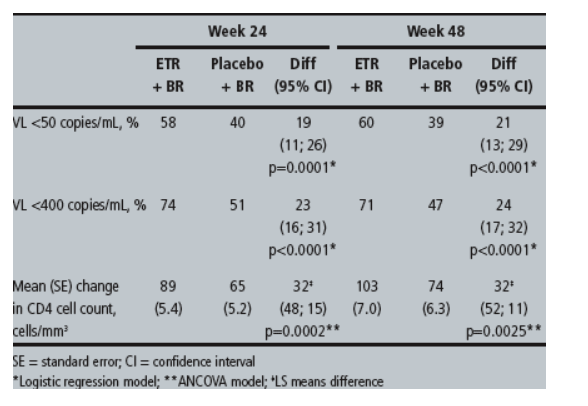
Of patients with a VL of <50 copies/mL at Week 24, 94% maintained a VL of <50 copies/mL at Week 48 with ETR + BR versus 89% with placebo + BR. In addition, at Week 48 the mean CD4 cell count was significantly increased in the ETR versus the placebo group.
As at Week 24, safety assessments at Week 48 showed that the incidences of any adverse event (AE) (96% ETR vs 97% placebo), serious AEs (19% vs 25%) and grade 3/4 AEs (29% vs 36%) with ETR were similar to placebo. Most AEs with ETR were mildto- moderate in severity and infrequently led to discontinuation (7% vs 7%). Rash (any type) (22% vs 11%), diarrhea (14% vs 24%) and nausea (15% vs 15%) were the most common AEs. Nervous system (18% vs 21%) and psychiatric disorders (14% vs 18%) with ETR were comparable to placebo.
Of patients with a VL of <50 copies/mL at Week 24, 94% maintained a VL of <50 copies/mL at Week 48 with ETR + BR versus 89% with placebo + BR. In addition, at Week 48 the mean CD4 cell count was significantly increased in the ETR versus the placebo group.
As at Week 24, safety assessments at Week 48 showed that the incidences of any adverse event (AE) (96% ETR vs 97% placebo), serious AEs (19% vs 25%) and grade 3/4 AEs (29% vs 36%) with ETR were similar to placebo. Most AEs with ETR were mildto- moderate in severity and infrequently led to discontinuation (7% vs 7%). Rash (any type) (22% vs 11%), diarrhea (14% vs 24%) and nausea (15% vs 15%) were the most common AEs. Nervous system (18% vs 21%) and psychiatric disorders (14% vs 18%) with ETR were comparable to placebo.
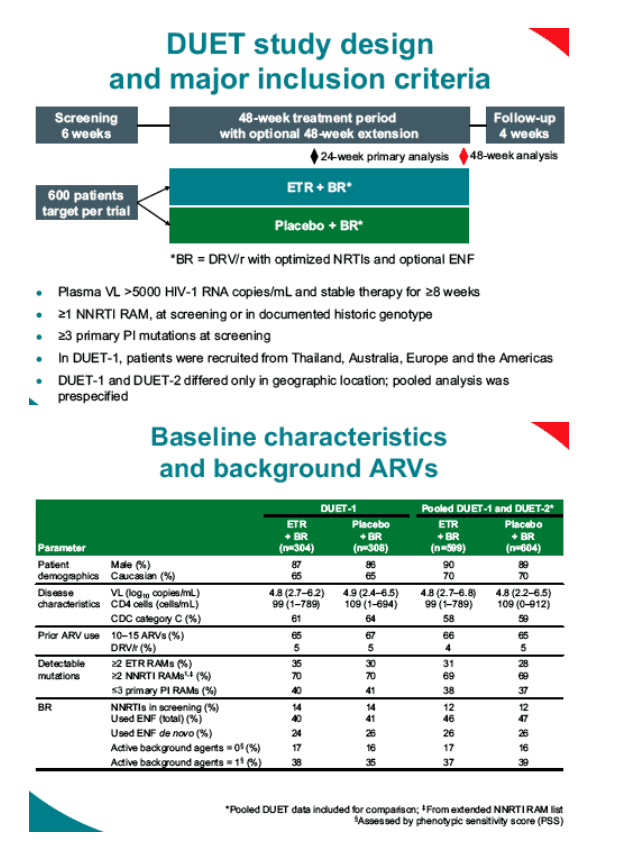
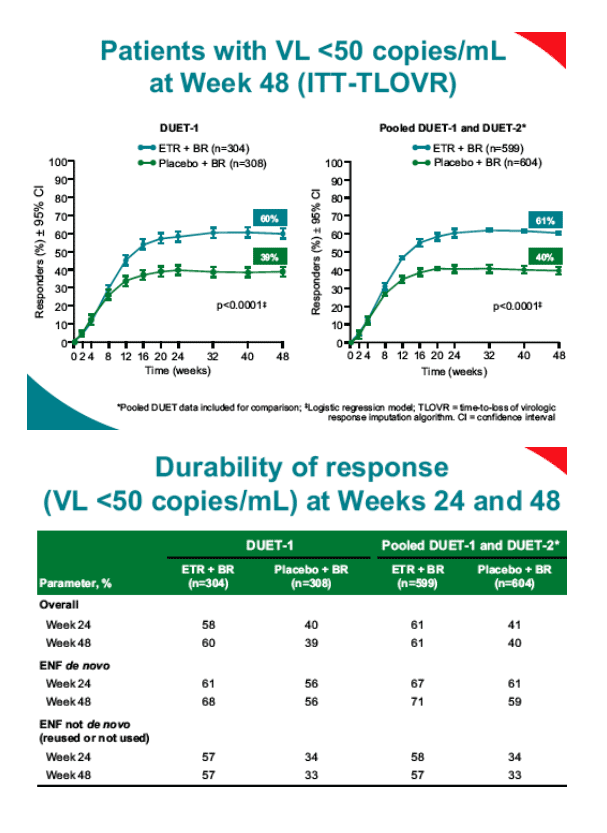
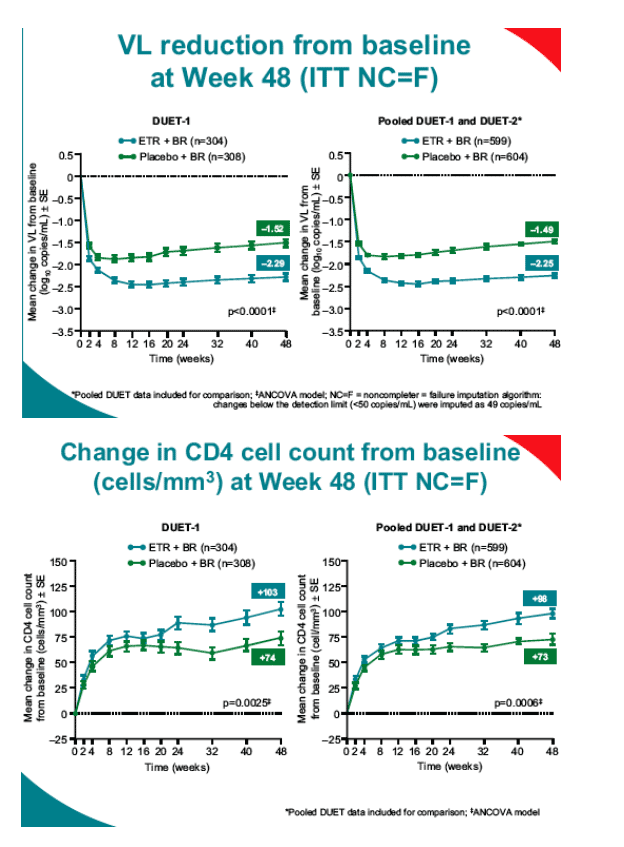
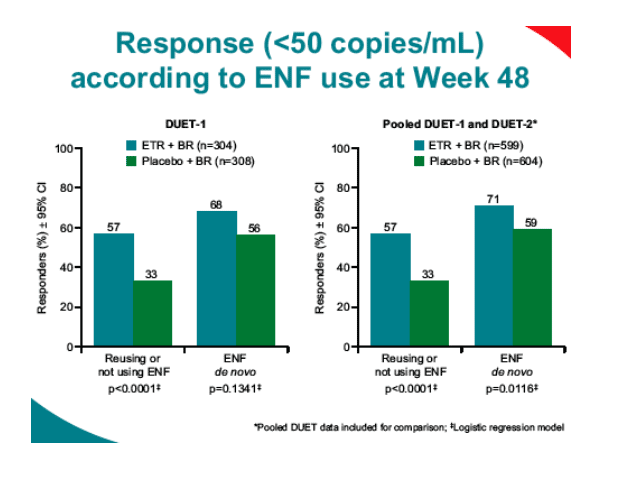
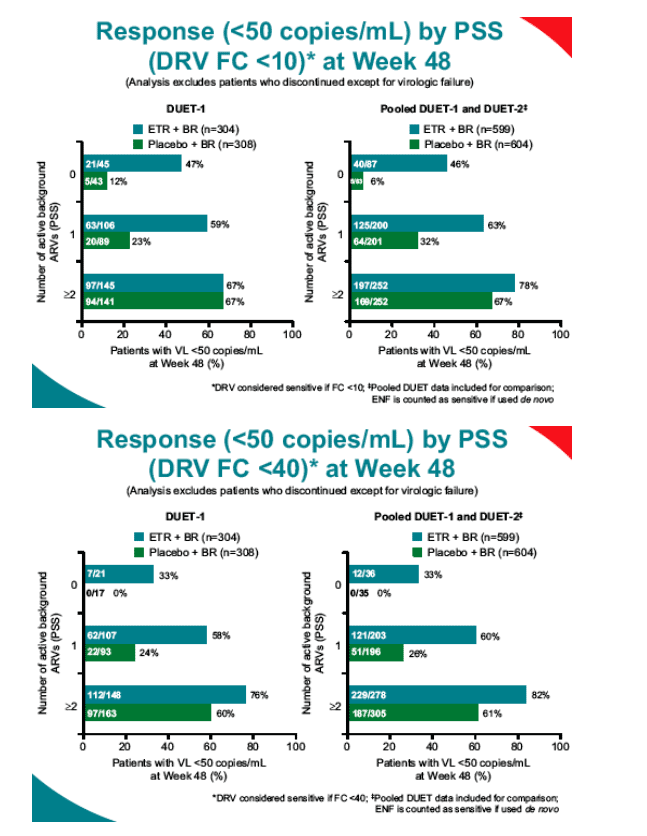
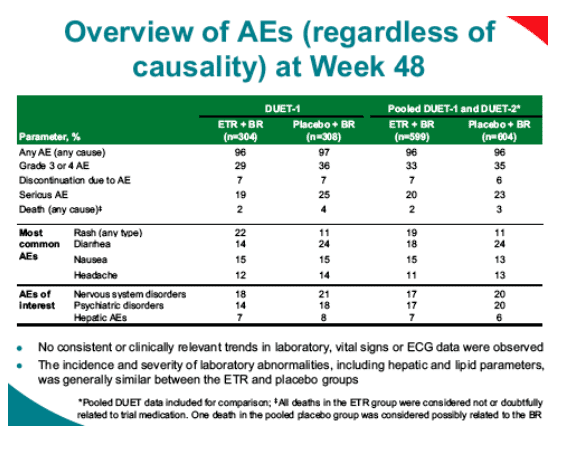
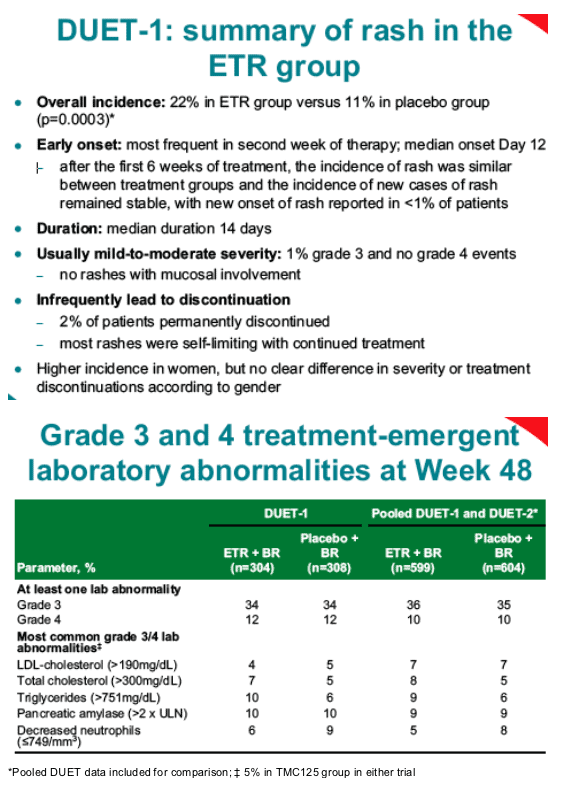
|
| |
|
 |
 |
|
|